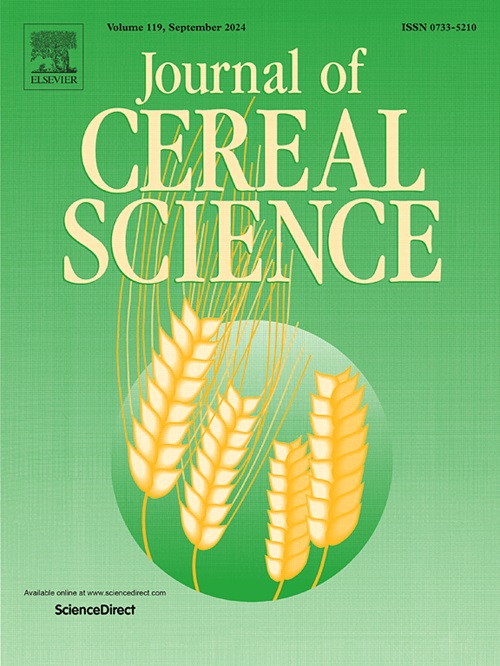Impact dehulling of browntop millet: Its physical and nutritional characterization
IF 3.9
2区 农林科学
Q2 FOOD SCIENCE & TECHNOLOGY
引用次数: 0
Abstract
The present study investigated the dehulling characteristics of browntop millet using an impact force-based method, with a focus on the effects of grain moisture content (8, 10, & 12%), impeller operating speed (1100, 1250, & 1400 rpm), and number of passes (NoP) (3, 5, & 7 passes). The responses included dehulling efficiency (DE), head yield (HY), percentage of broken (PoB), milling efficiency (ME), and grain loss (GL). With the increase in impeller speed from 1100 to 1400 rpm, the DE increased from 72.67% to 94.87% while the HY reduced from 57.24 to 38.54%. The optimized levels of the variables were found as 12% moisture content, 1234.93 rpm of impeller speed, and 5.94 NoP, while the DE, HY, PoB, ME, and GL obtained at the optimized levels were found as 76.98%, 42.57%, 3.51%, 70.89%, and 10.81%, respectively. Multivariate analysis was conducted to understand the correlation between the responses. It showed a positive correlation between ME and DE, and an almost null correlation between ME and PoB. The research also examined the alteration in physical properties, proximate composition, anti-nutrients, and functional properties of the grain. The tannin and phytate content reduced after dehulling from 0.64 to 0.26 and 1.04 to 0.81 mg g−1, respectively. Statistical analysis revealed that the operating factors significantly impacted dehulling characteristics and suggested that impact dehulling offers an effective and efficient approach to processing browntop millet.

求助全文
约1分钟内获得全文
求助全文
来源期刊

Journal of Cereal Science
工程技术-食品科技
CiteScore
7.80
自引率
2.60%
发文量
163
审稿时长
38 days
期刊介绍:
The Journal of Cereal Science was established in 1983 to provide an International forum for the publication of original research papers of high standing covering all aspects of cereal science related to the functional and nutritional quality of cereal grains (true cereals - members of the Poaceae family and starchy pseudocereals - members of the Amaranthaceae, Chenopodiaceae and Polygonaceae families) and their products, in relation to the cereals used. The journal also publishes concise and critical review articles appraising the status and future directions of specific areas of cereal science and short communications that present news of important advances in research. The journal aims at topicality and at providing comprehensive coverage of progress in the field.
 求助内容:
求助内容: 应助结果提醒方式:
应助结果提醒方式:


